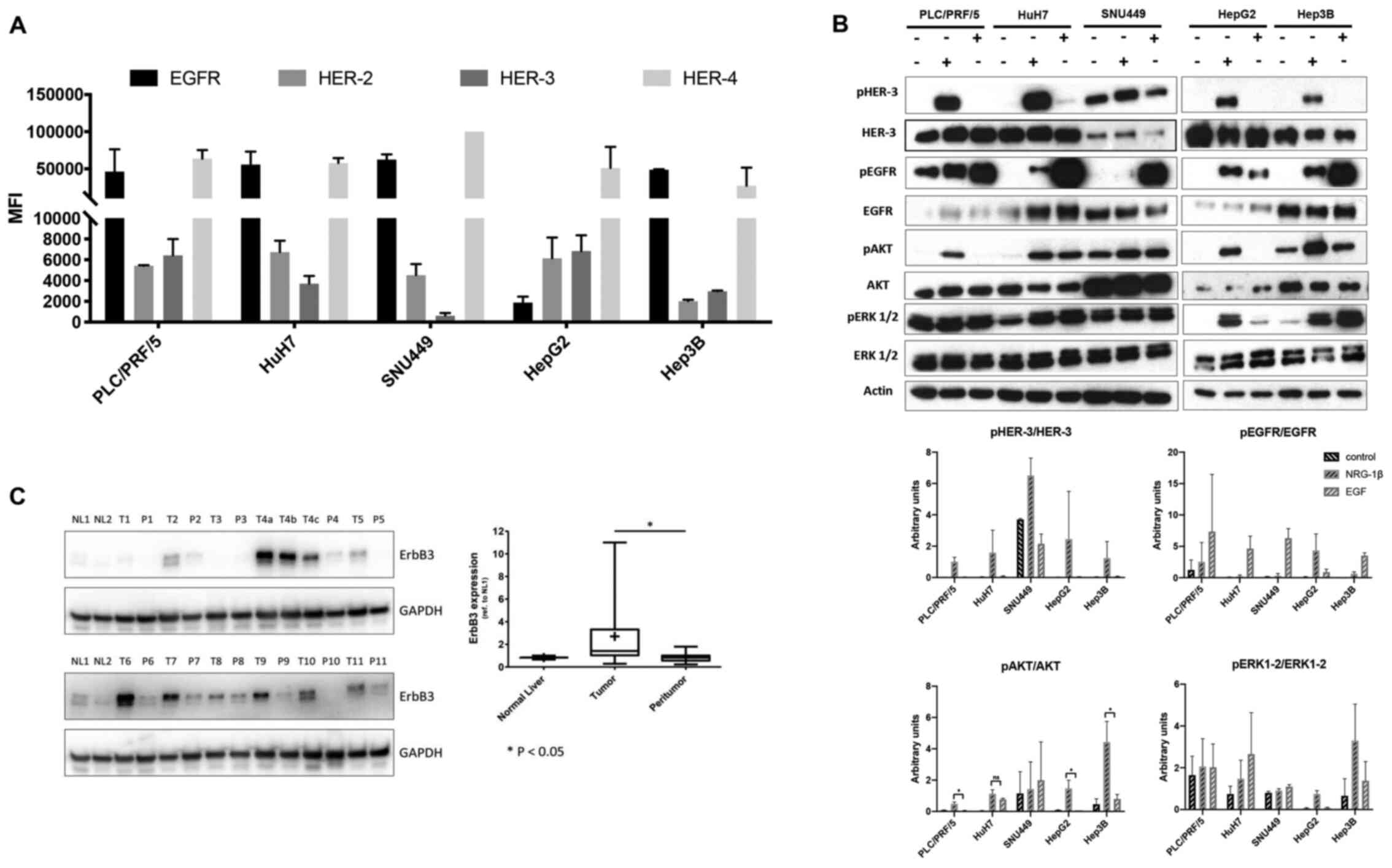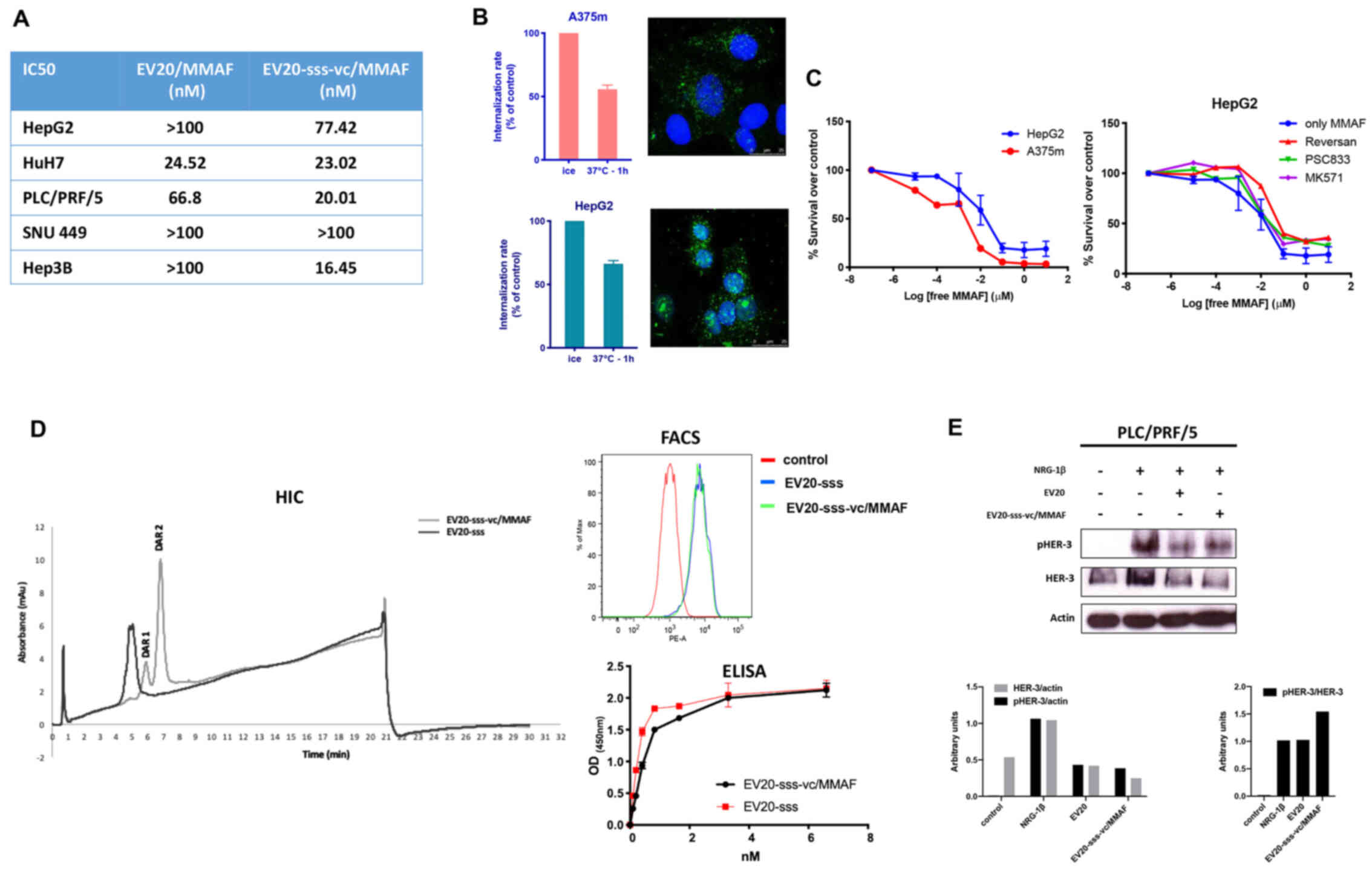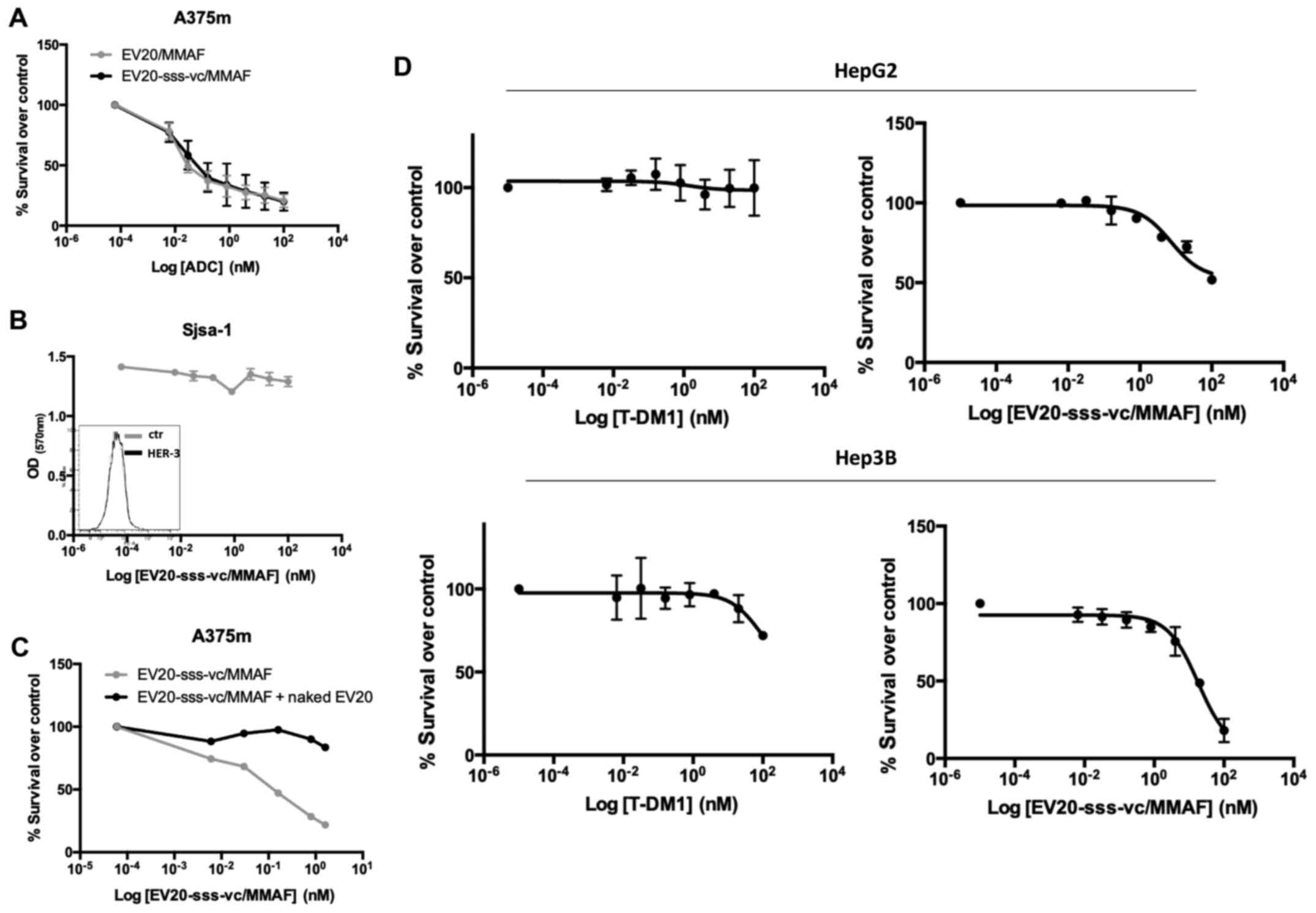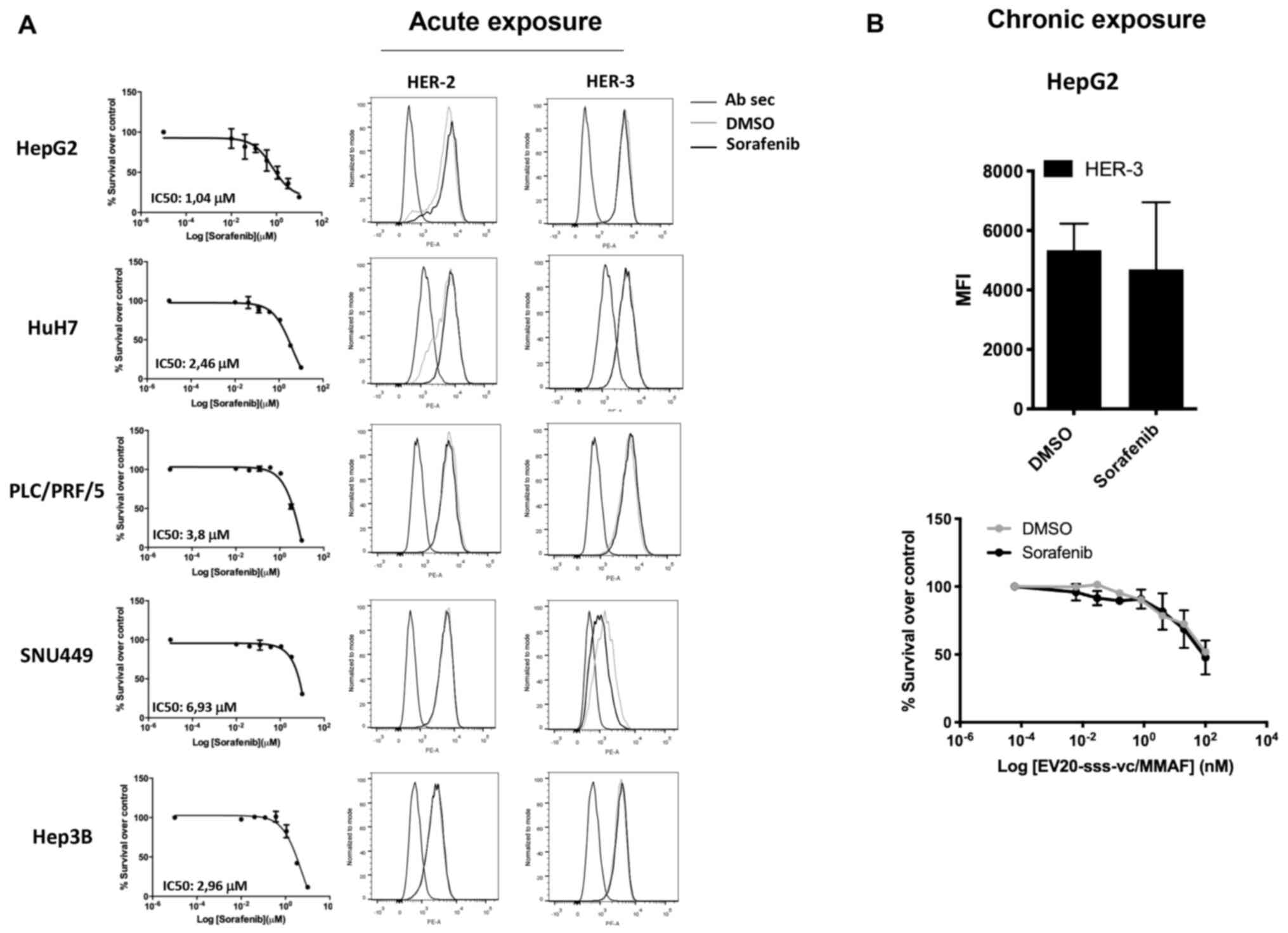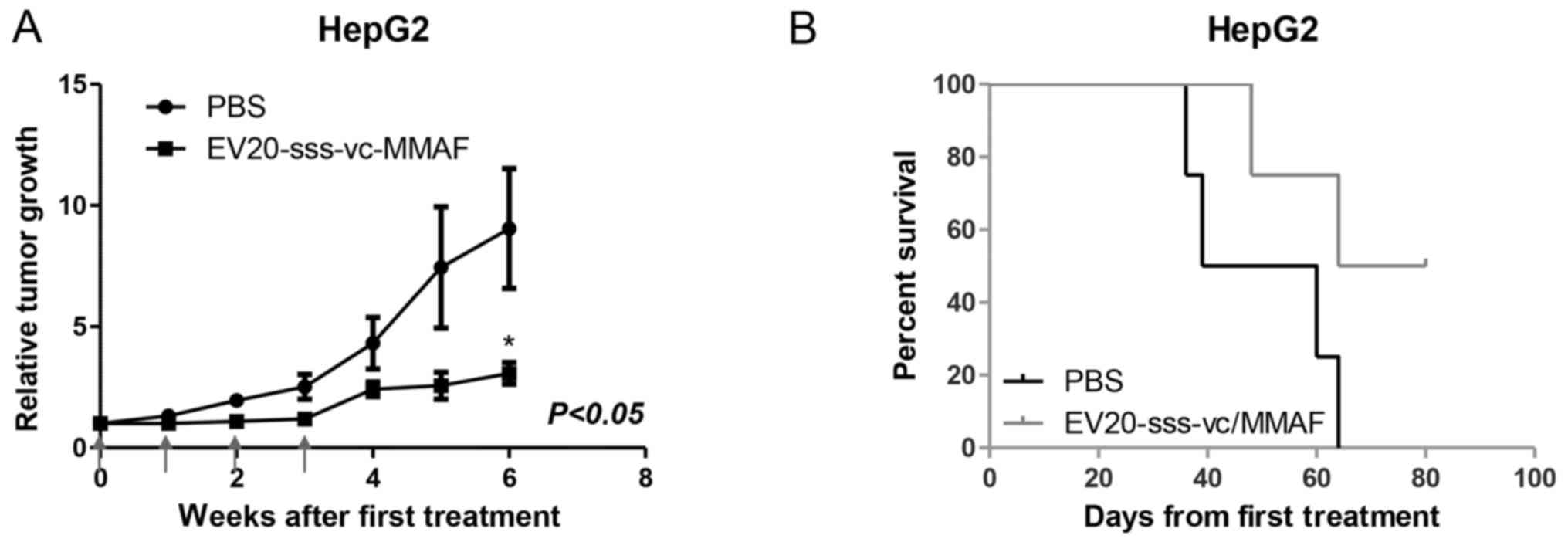|
1
|
Cronin KA, Lake AJ, Scott S, Sherman RL,
Noone AM, Howlader N, Henley SJ, Anderson RN, Firth AU, Ma J, et
al: Annual report to the nation on the status of cancer, part I:
National cancer statistics. Cancer. 124:2785–2800. 2018. View Article : Google Scholar : PubMed/NCBI
|
|
2
|
Jiang BG, Wang N, Huang J, Yang Y, Sun LL,
Pan ZY and Zhou WP: Tumor SOCS3 methylation status predicts the
treatment response to TACE and prognosis in HCC patients.
Oncotarget. 8:28621–28627. 2017. View Article : Google Scholar : PubMed/NCBI
|
|
3
|
Perini MV, Starkey G, Fink MA, Fink MA,
Bhandari R, Muralidharan V, Jones R and Christophi C: From minimal
to maximal surgery in the treatment of hepatocarcinoma: A review.
World J Hepatol. 7:93–100. 2015. View Article : Google Scholar : PubMed/NCBI
|
|
4
|
Oda K, Uto H, Mawatari S and Ido A:
Clinical features of hepatocellular carcinoma associated with
nonalcoholic fatty liver disease: A review of human studies. Clin J
Gastroenterol. 8:1–9. 2015. View Article : Google Scholar : PubMed/NCBI
|
|
5
|
Mizuguchi T, Kawamoto M, Meguro M, Okita
K, Ota S, Ishii M, Ueki T, Nishidate T, Kimura Y, Furuhata T, et
al: Impact of aging on morbidity and mortality after liver
resection: A systematic review and meta-analysis. Surg Today.
45:259–270. 2015. View Article : Google Scholar : PubMed/NCBI
|
|
6
|
Guo XL, Li D, Hu F, Song J, Zhang S, Deng
W, Sun K, Zhao Q, Xie X, Song Y, et al: Targeting autophagy
potentiates chemotherapy-induced apoptosis and proliferation
inhibition in hepatocarcinoma cells. Cancer Lett. 320:171–179.
2012. View Article : Google Scholar : PubMed/NCBI
|
|
7
|
Abou-Alfa GK: Sorafenib use in
hepatocellular carcinoma: More questions than answers. Hepatology.
60:15–18. 2014. View Article : Google Scholar : PubMed/NCBI
|
|
8
|
Zhu AX: Beyond sorafenib: Novel targeted
therapies for advanced hepatocellular carcinoma. Expert Opin
Investig Drugs. 19:663–672. 2010. View Article : Google Scholar : PubMed/NCBI
|
|
9
|
Palmer DH: Sorafenib in advanced
hepatocellular carcinoma. N Engl J Med. 359:2498, author reply
2498–2499. 2008.
|
|
10
|
Niu L, Liu L, Yang S, Ren J, Lai PBS and
Chen GG: New insights into sorafenib resistance in hepatocellular
carcinoma: Responsible mechanisms and promising strategies. Biochim
Biophys Acta Rev Cancer. 1868:564–570. 2017. View Article : Google Scholar : PubMed/NCBI
|
|
11
|
Blivet-Van Eggelpoel MJ, Chettouh H,
Fartoux L, Aoudjehane L, Barbu V, Rey C, Priam S, Housset C,
Rosmorduc O and Desbois-Mouthon C: Epidermal growth factor receptor
and HER-3 restrict cell response to sorafenib in hepatocellular
carcinoma cells. J Hepatol. 57:108–115. 2012. View Article : Google Scholar : PubMed/NCBI
|
|
12
|
Mishra R, Patel H, Alanazi S, Yuan L and
Garrett JT: HER3 signaling and targeted therapy in cancer. Oncol
Rev. 12:3552018.PubMed/NCBI
|
|
13
|
Gaborit N, Lindzen M and Yarden Y:
Emerging anti-cancer antibodies and combination therapies targeting
HER3/ERBB3. Hum Vaccin Immunother. 12:576–592. 2016. View Article : Google Scholar : PubMed/NCBI
|
|
14
|
Capone E, Prasetyanti PR and Sala G:
HER-3: Hub for escape mechanisms. Aging (Albany NY). 7:899–900.
2015. View Article : Google Scholar : PubMed/NCBI
|
|
15
|
Jaiswal BS, Kljavin NM, Stawiski EW, Chan
E, Parikh C, Durinck S, Chaudhuri S, Pujara K, Guillory J, Edgar
KA, et al: Oncogenic ERBB3 mutations in human cancers. Cancer Cell.
23:603–617. 2013. View Article : Google Scholar : PubMed/NCBI
|
|
16
|
Aurisicchio L, Marra E, Roscilli G,
Mancini R and Ciliberto G: The promise of anti-ErbB3 monoclonals as
new cancer therapeutics. Oncotarget. 3:744–758. 2012. View Article : Google Scholar : PubMed/NCBI
|
|
17
|
Fu Y, Urban DJ, Nani RR, Zhang YF, Li N,
Fu H, Shah H, Gorka AP, Guha R, Chen L, et al: Glypican-3 specific
antibody drug conjugates targeting hepatocellular carcinoma.
Hepatology. 70:563–576. 2019. View Article : Google Scholar : PubMed/NCBI
|
|
18
|
Nagayama A, Ellisen LW, Chabner B and
Bardia A: Antibody-drug conjugates for the treatment of solid
tumors: Clinical experience and latest developments. Target Oncol.
12:719–739. 2017. View Article : Google Scholar : PubMed/NCBI
|
|
19
|
Moek KL, de Groot DJ, de Vries EG and
Fehrmann RS: The antibody-drug conjugate target landscape across a
broad range of tumour types. Ann Oncol. 28:3083–3091. 2017.
View Article : Google Scholar : PubMed/NCBI
|
|
20
|
Prasetyanti PR, Capone E, Barcaroli D,
D'Agostino D, Volpe S, Benfante A, van Hooff S, Iacobelli V, Rossi
C, Iacobelli S, et al: ErbB-3 activation by NRG-1beta sustains
growth and promotes vemurafenib resistance in BRAF-V600E colon
cancer stem cells (CSCs). Oncotarget. 6:16902–16911. 2015.
View Article : Google Scholar : PubMed/NCBI
|
|
21
|
Ghasemi R, Rapposelli IG, Capone E, Rossi
C, Lattanzio R, Piantelli M, Sala G and Iacobelli S: Dual targeting
of ErbB-2/ErbB-3 results in enhanced antitumor activity in
preclinical models of pancreatic cancer. Oncogenesis. 3:e1172014.
View Article : Google Scholar : PubMed/NCBI
|
|
22
|
Sala G, Rapposelli IG, Ghasemi R, Piccolo
E, Traini S, Capone E, Rossi C, Pelliccia A, Di Risio A, DEgidio M,
et al: EV20, a novel anti-ErbB-3 humanized antibody, promotes
ErbB-3 down-regulation and inhibits tumor growth in vivo. Transl
Oncol. 6:676–684. 2013. View Article : Google Scholar : PubMed/NCBI
|
|
23
|
Sala G, Traini S, D'Egidio M, Vianale G,
Rossi C, Piccolo E, Lattanzio R, Piantelli M, Tinari N, Natali PG,
et al: An ErbB-3 antibody, MP-RM-1, inhibits tumor growth by
blocking ligand-dependent and independent activation of ErbB-3/Akt
signaling. Oncogene. 31:1275–1286. 2012. View Article : Google Scholar : PubMed/NCBI
|
|
24
|
Capone E, Lamolinara A, D'Agostino D,
Rossi C, De Laurenzi V, Iezzi M, Iacobelli S and Sala G:
EV20-mediated delivery of cytotoxic auristatin MMAF exhibits potent
therapeutic efficacy in cutaneous melanoma. J Control Release.
277:48–56. 2018. View Article : Google Scholar : PubMed/NCBI
|
|
25
|
Gandullo-Sanchez L, Capone E, Ocana A,
Iacobelli S, Sala G and Pandiella A: HER3 targeting with an
antibody-drug conjugate bypasses resistance to anti-HER2 therapies.
EMBO Mol Med. 12:e114982020. View Article : Google Scholar : PubMed/NCBI
|
|
26
|
Giansanti F, Capone E, Ponziani S, Piccolo
E, Gentile R, Lamolinara A, Di Campli A, Sallese M, Iacobelli V,
Cimini A, et al: Secreted Gal-3BP is a novel promising target for
non-internalizing antibody-drug conjugates. J Control Release.
294:176–184. 2018. View Article : Google Scholar : PubMed/NCBI
|
|
27
|
Chen R, Hou J, Newman E, Kim Y, Donohue C,
Liu X, Thomas SH, Forman SJ and Kane SE: CD30 Downregulation, MMAE
resistance, and MDR1 upregulation are all associated with
resistance to brentuximab vedotin. Mol Cancer Ther. 14:1376–1384.
2015. View Article : Google Scholar : PubMed/NCBI
|
|
28
|
Warmann S, Gohring G, Teichmann B,
Geerlings H and Fuchs J: MDR1 modulators improve the chemotherapy
response of human hepatoblastoma to doxorubicin in vitro. J Pediatr
Surg. 37:1579–1584. 2002. View Article : Google Scholar : PubMed/NCBI
|
|
29
|
Enhanced ERBB3 Signaling promotes
resistance in melanoma. Cancer Discov. 3:4792013.
|
|
30
|
Chakrabarty A, Sanchez V, Kuba MG,
Rinehart C and Arteaga CL: Feedback upregulation of HER3 (ErbB3)
expression and activity attenuates antitumor effect of PI3K
inhibitors. Proc Natl Acad Sci USA. 109:2718–2723. 2012. View Article : Google Scholar : PubMed/NCBI
|
|
31
|
Deeks ED: Cabozantinib: A review in
advanced hepatocellular carcinoma. Target Oncol. 14:107–113. 2019.
View Article : Google Scholar : PubMed/NCBI
|
|
32
|
Zongyi Y and Xiaowu L: Immunotherapy for
hepatocellular carcinoma. Cancer Lett. 470:8–17. 2020. View Article : Google Scholar : PubMed/NCBI
|
|
33
|
Zhang T, Zhang L, Xu Y, Lu X, Zhao H, Yang
H and Sang X: Neoadjuvant therapy and immunotherapy strategies for
hepatocellular carcinoma. Am J Cancer Res. 10:1658–1667.
2020.PubMed/NCBI
|
|
34
|
Llovet JM, Montal R and Villanueva A:
Randomized trials and endpoints in advanced HCC: Role of PFS as a
surrogate of survival. J Hepatol. 70:1262–1277. 2019. View Article : Google Scholar : PubMed/NCBI
|
|
35
|
Llovet JM, Montal R, Sia D and Finn RS:
Molecular therapies and precision medicine for hepatocellular
carcinoma. Nat Rev Clin Oncol. 15:599–616. 2018. View Article : Google Scholar : PubMed/NCBI
|
|
36
|
De Luca E, Marino D and Di Maio M:
Ramucirumab, a second-line option for patients with hepatocellular
carcinoma: A review of the evidence. Cancer Manag Res.
12:3721–3729. 2020. View Article : Google Scholar : PubMed/NCBI
|
|
37
|
Marrero JA, Fontana RJ, Barrat A, Askari
F, Conjeevaram HS, Su GL and Lok AS: Prognosis of hepatocellular
carcinoma: Comparison of 7 staging systems in an American cohort.
Hepatology. 41:707–716. 2005. View Article : Google Scholar : PubMed/NCBI
|
|
38
|
Ponziani S, Di Vittorio G, Pitari G,
Cimini AM, Ardini M, Gentile R, Iacobelli S, Sala G, Capone E,
Flavell DJ, et al: Antibody-drug conjugates: The new frontier of
chemotherapy. Int J Mol Sci. 21:55102020. View Article : Google Scholar
|
|
39
|
Coats S, Williams M, Kebble B, Dixit R,
Tseng L, Yao NS, Tice DA and Soria JC: Antibody-drug conjugates:
Future directions in clinical and translational strategies to
improve the therapeutic index. Clin Cancer Res. 25:5441–5448. 2019.
View Article : Google Scholar : PubMed/NCBI
|
|
40
|
Birrer MJ, Moore KN, Betella I and Bates
RC: Antibody-drug conjugate-based therapeutics: State of the
science. J Natl Cancer Inst. 111:538–549. 2019. View Article : Google Scholar : PubMed/NCBI
|















